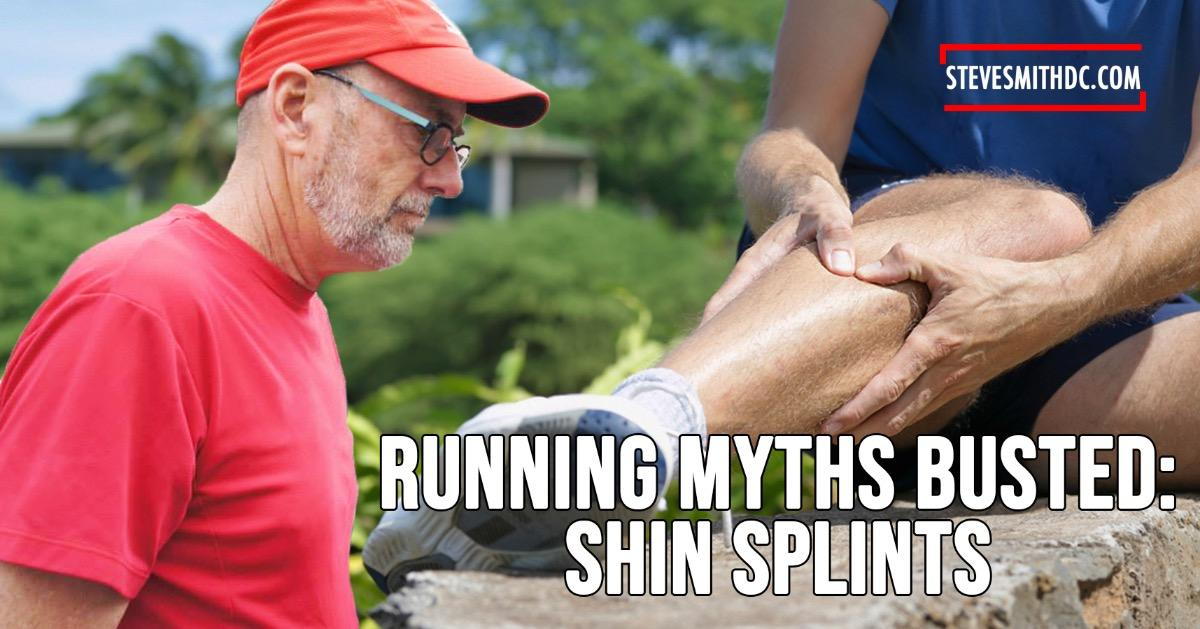
Shin Splints
How Shin Splints Reveal Themselves
You’ve had some great runs over the past few weeks. Your energy is high, and you’re gliding along like greased lightening, no effort at all.
However, a couple of weeks ago, you went out for a run and felt a sharp pain in your right lower shin almost immediately. It felt ok after you warmed up, then the pain went away, thank god!
On a more recent long run, the pain returned with a vengeance and you couldn’t even jog a mile without pain in your shins. To make matters worse, the pain is now pulsating from your left and right legs!!!
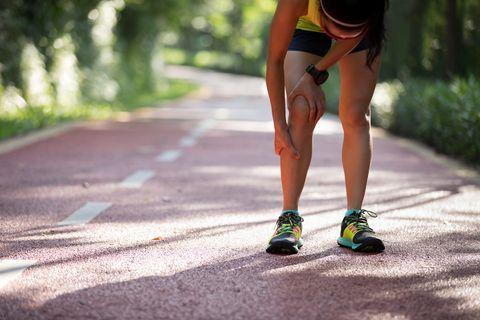
But… you have an 18-miler coming up and you worry that your marathon training is in jeopardy. Now what?
Causes Of Shin Splints
When I interview runners with shin splints, they often ask if they have the problem because they didn’t stretch enough.
You can stretch the muscles that are involved in shin splints, but not much and not easily. Flexibility is almost never the reason why you are injured.
Running only uses a fraction of your full potential range of motion.That’s right, your gait only uses part of your range of motion.All runners should have tight muscles as a result of training load. Tight muscles are good at absorbing shock, returning energy and they have more power.
So, is muscle weakness the reason for shin splints? Maybe. Not usually though.
Is it from your shoes? Sometimes.
Is it because you have poor running form? Nope.
Shin splints are usually caused by training errors.
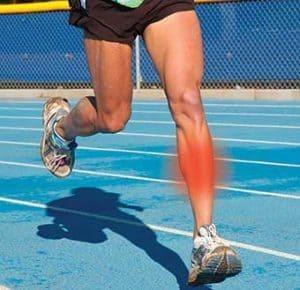
A careful history usually unmasks a hard run with little or no warm up.
Arriving late on track night and jumping into the workout of the day will overload your lower legs to the breaking point.
The damage has been done.
Then you go out a few days later for an easy 6-miler and your shins are sore. Or, you’ve been on a marathon training program and it’s time to run a 14-miler. Your midweek runs have been neglected because you’ve been super busy at work, family obligations, and social commitments.
That’s the way your life has been going lately.
You’ll make that 14-miler because you’re committed, and your training group is looking forward to seeing you!
Missing your midweek runs will put you up against the long run without the strength you need to absorb huge, sustained ground reaction forces that were designed by the running gods to shred the shins of the unwary.
This often happens to new runners.

If you haven’t maintained your fitness, you can lose the conditioning that makes you strong enough to absorb heavy impact loads. The consequence could be a tear of the muscles along the tibia bone (your shin). Those muscles are contained within a tubular membrane or fascia that is attached to the inside of your tibia. The muscle attachment is most vulnerable at the distal third of your lower leg, and that’s where shin splints are usually most tender. Most of the time the tenderness is in the muscle. Sometimes there is tenderness to the touch on the bone itself, and that spells trouble.
Is it a stress fracture or just sore muscles?
The most definitive test is an MRI. However, your insurance is unlikely to pay for it because the probability of a stress fracture is very low. Instead, they will recommend that you stop running, use anti-inflammatories for 6 weeks and/or have a course of failed therapy before approving the test. Alternatively, you could pay out of pocket for a MRI, which costs about $400 at a high-quality facility. A MRI will not likely change the course of treatment though.
Diagnosing Shin Splints
Instead of imaging, let’s look at the physical findings to see what the problem is.
Deep palpation (the art of feeling specific anatomy) will likely reveal a very tender area just behind the tibia. The tibia feels like a blade along the area commonly known as the shin. Just behind that blade there are a couple of muscles that run along the lower leg. Gliding deeply across this area with your thumb and some moisturizing cream or massage oil will give you a sense of the muscle tenderness.
Most shin splints have a very tender area about two thirds of the way down the lower leg. Go slowly keeping firm contact in the muscle, not on the bone. You’ll locate a definite tender lump in the muscle. Also look for a hole or void in the muscle as well as any swelling.
Now do the same process along the shin bone, looking for tender areas. If there is minimal tenderness in the muscles and bone, try a “Hop” test where you stand on one leg and hop to provoke pain.
Interpreting the findings is straight forward.
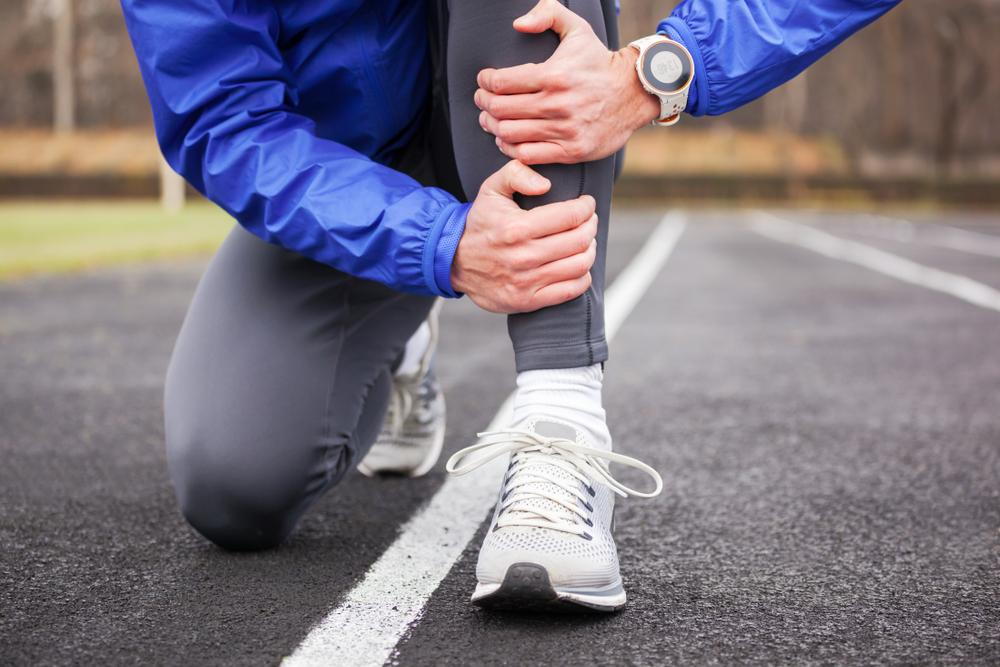
Significant tenderness along the bone probably means that you have a tibial stress reaction, with bone marrow edema, possibly a stress fracture.
Severe bone tenderness and failure to perform the hop test is more likely to be a stress fracture. You will likely be out of action for 3-8 weeks depending on the extent of the injury. Bone marrow edema can be unpredictable, with protracted healing times.
Tenderness in the muscle only, means you have posterior tibial tendonitis, a condition involving muscle or tendon only. You probably have a 2-3 week problem, slowly resolving to a point where you can gradually ramp up training to full exertion over the next 4-6 weeks.
Mild tenderness in the muscles and tendons without pain on the hop test means you can continue running, but only if the pain is mild, at 3 or less on the 1-10 scale of pain. You’ll need to run easy and stay out of the hills. Downhill running should only be done with great care to avoid long strides and a fast pace. Slowing down with short strides will lessen the impact force.
Pain above level 3 on a 1-10 scale should be avoided. Pain that is increasing as the run progresses is a signal to STOP running and slowly walk back.
Often, shin splints will improve after you warm up. This doesn’t mean you are in the clear. Be cautious and watch for pain after the run or the next morning, both are signs of a more extensive injury.
Sharp pain in the bone during a run means stop running, your body will probably need several weeks of rest. Do your body a favor and get the rest.
Treatment For Shin Splints
The best treatment is rest.
Use alternate workouts that will maintain running fitness. I recommend the elliptical trainer, using the same time/pace value as your regular run. Go forward for 2/3 of the workout, backward during the last 1/3. This distributes the load to all your gait muscles and will give you an adequate workout that challenges both gait and cardiovascular systems.
More severe tenderness that is painful while on an elliptical trainer should be discontinued. For the lowest impact opt. for aqua jogging. In all but the most severe cases, aqua jogging is approved and will help to avoid de-conditioning.
Self-Treatment For Shin Splints
- A deep tissue massage is helpful. It’s not a perfect treatment for all. However, some runners swear by it. I have had very good results with Gua Sha or instrument assisted soft tissue manipulation. You can see a video on how to use this technique here:
- Kinesiology tape is often used for shin splints. A more effective means of treatment is to use a functional taping technique. Using the newer functional tape is easy to apply, and does not require significant skill or training. You can see how to apply functional tape here:
- It has been suggested that weak calf muscles are a primary cause of shin splints. Possibly true. Use a step or curb and do straight leg and bent leg double and single leg calf raises. Turn the toes out during the calf raises to engage the medial gastrocnemius, tibialis posterior and flexor hallucis muscles.
However, you could argue that these exercises aren’t necessary. Running exerts enough stress on your calf muscles to strengthen them, and good training plan will remedy this without adding any extra exercises.
Other Treatments For Shin Splints
I use ultrasound and electrical stimulation along with the above mentioned treatments. These therapies work well for minor cases and will get you to the start line of your next race, provided the condition isn’t severe. You can stretch the muscles in shin splints. Here are a couple of stretches runners use for shin splints:
Some runners claim calf sleeves help with shin splints. I can’t argue with their perceptions, but I can say that there isn’t much evidence to support their use. Claims by manufacturers and retailers supporting their use should be taken with skepticism.
Orthotics are often helpful. I almost never use custom made orthotics because you can find adequate off the shelf orthotics, like Power Steps and Superfeet, at your local running specialty store. I would only recommend making custom orthotics only after you’ve tried the inexpensive off the shelf orthotics.If you have a cushion type shoe, switching to a stability shoe may be helpful. This is especially true if you over pronate. If you need help picking the right shoe for you, you may find this article particularly helpful.Other treatments include cold laser therapy, dry needling, ice, heat, and over the counter anti-inflammatories. These treatments have varying degrees of success and they are all relatively harmless.
Preventing Shin Splints
Be generous with your warm up, especially if you have had a long break from running, or you are ramping up to higher mileage.
Use a slow progression to higher mileage with consistent workouts several times per week.
Slowly increasing your pace, with only one “Effort” or speed workout per week, initially will give your muscles time to adapt and strengthen for the coming exertion of long hard paced running.
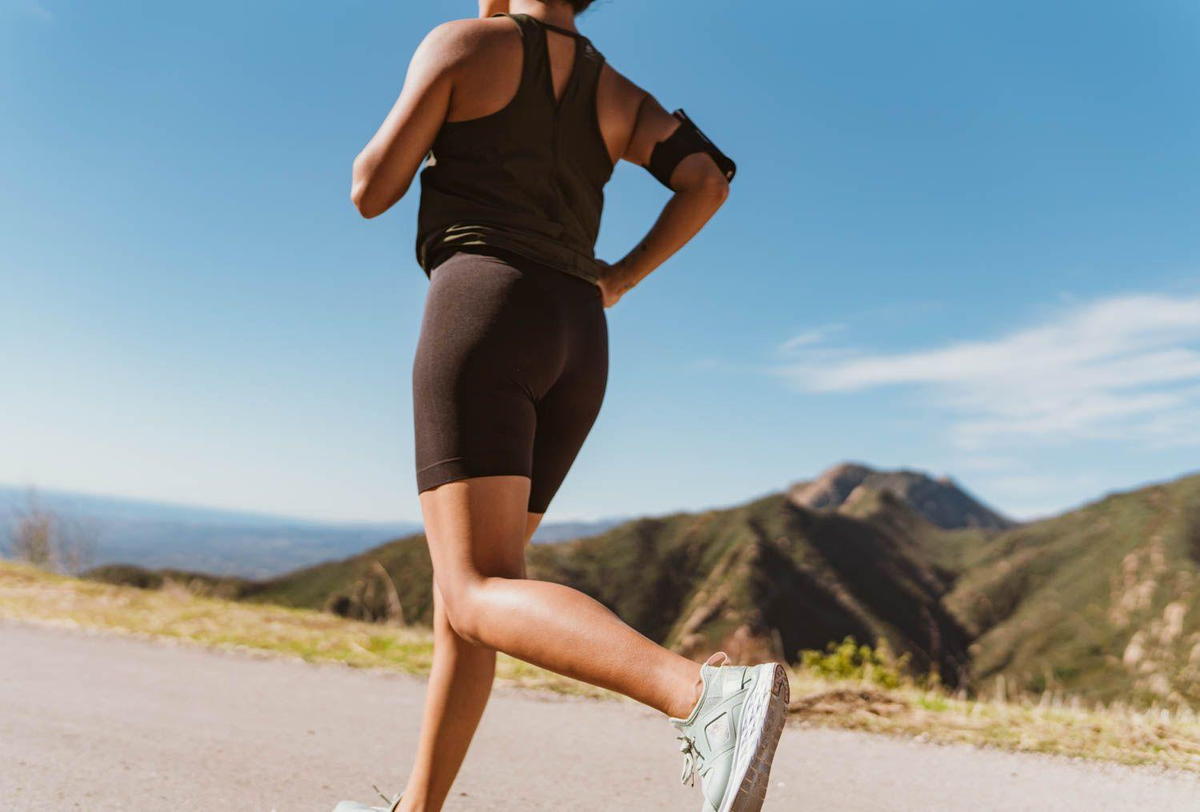
Summing Up Shin Splints
- Shin splints are usually caused by training errors
- The best treatment for Shin Splints is rest
- The second best is a shoe change or incorporating orthotics.
- The third most effective treatment is some sort of deep tissue manipulation like Gua Sha
The good news is that you could apply all three strategies on your own, at little to no cost. I hope this helps! If you have any questions or comments, please don’t hesitate to give me a call.
Warmest Regards,
Dr. Steve Smith
Co-Founder of Pacer Nation, Chiropractor and Fellow Marathon Runner


